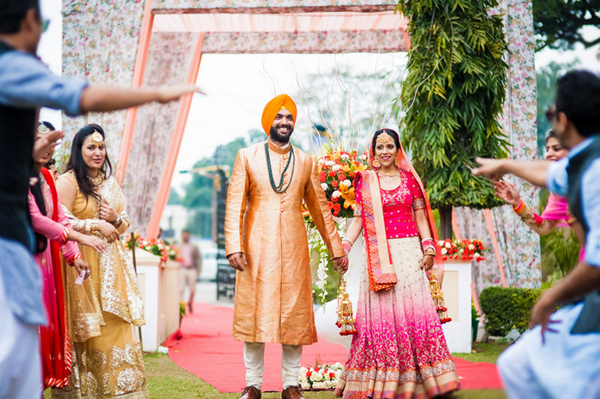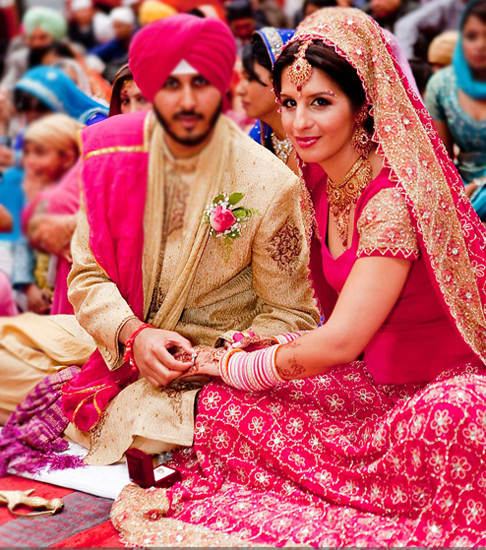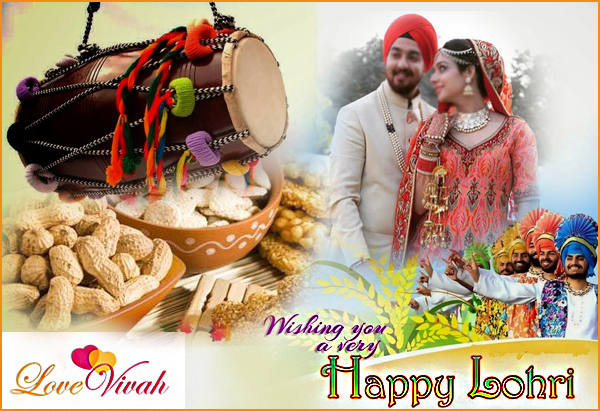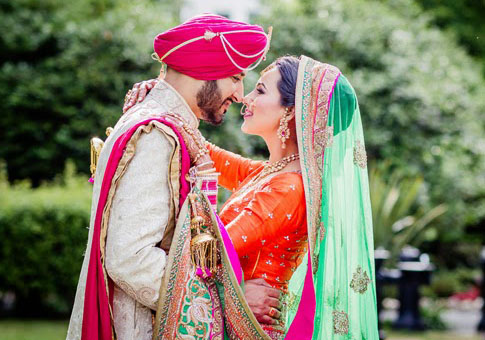Sikh wedding rituals are very colorful, exciting and generally lasts for a week and more. It is different from typical Hindu wedding, where the priest fixes an auspicious date for the wedding, whereas in a Sikh wedding does not follow such traditions. Rather, date of wedding is generally decided mutually by the by the families of Sikh bride & groom. On the wedding day, the Sikh bride and groom for marriage takes phera in a gurudwara in front of the holy Guru Granth Sahib and their respective families and friends. Let’s take a close look at some significant wedding rituals of Sikh wedding.
Engagement ceremony/Kurmai ceremony: In the special ceremony, the bhaiji of the gurudwara applies the tilak on the forehead of the groom and recites religious rhymes to shower the blessings. Both the families exchange the gifts. The bride and the groom exchange the rings in the presence of their respective families and friends.
Chunni Chadhai ceremony: After the engagement ceremony, this is the next ceremony that is conducted in the presence of both the families. Generally, the family of the Sikh groom visits the bride’s house. The mother of the groom covers the head of her future-daughter-in-law with chunni. She also gives her gifts, jewellery, clothes, sweets and dry-fruits to the would-be-bride as auspicious ritual. As a ritual, the mother of the groom applies a little mehendi on the hands of would-be-bride.
Chuda ceremony: This is one of the most-loved and awaited rituals in the lives of all Sikh and Punjabi girls. In the ceremony, the bride’s maternal uncle get her red and white bangles on which golden colored kalire are tied as ritual.
Gana Rituals: This ceremony is held in both the families like sacred red thread is tied on the bride’s left hand and the groom’s right hand. Generally, this is conducted a few days prior to the actual wedding date. This sacred thread is believed to protect the couple from all bad omen and spirits.
Mehendi ceremony: This is very fun-filled function of a Sikh wedding. In this ritual, the families of both the bride and groom either organize a combined get-together or separate ones for their close relatives and friends. Mehendi is applied on the hands of both the Sikh bride and groom. The female members of both the families also apply mehendi on their hands. It is fun-filled activity, members of both the families also prepare special dance performances to present on the day during mehendi function.
Gharoli ritual: In this ritual, the females of the family brought holy water from the Gurudwara. The bride and the groom are supposed to bathe with this holy water. This water is brought by the sister-in-law of the bride and the groom respectively in an earthen pot.
Milni ceremony: When the braat arrives at the wedding venue, the bride’s family members welcome the groom’s family with the gifts known as sagan. Even at times, the relatives of both the families also exchange garlands.
Wedding ceremony: The actual wedding ceremony in Sikh wedding is not elaborate. Both the families go to Gurudwara and attend the main kirtan. The granthi in the Gurudwara recites the ardaas. After this, the couple then takes four pheras and carries a kripan in his hand. After that they are pronounced married and take the blessings of all elders.
LoveVivah.com Punjabi matrimony site gives marriage resumes of Punjabi brides and grooms for wedding. Search your partner with Aadhaar verified matchmakings profiles.




